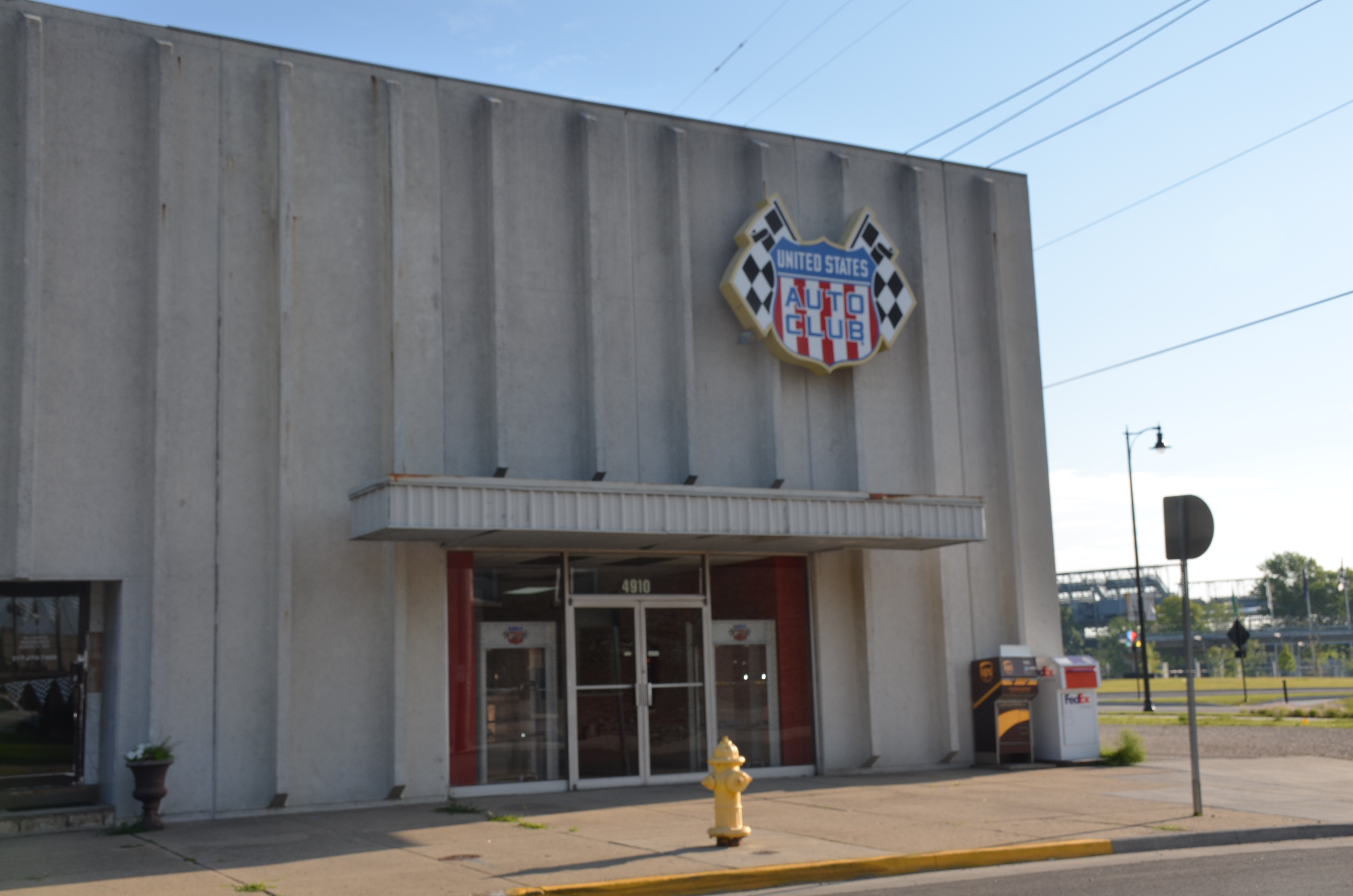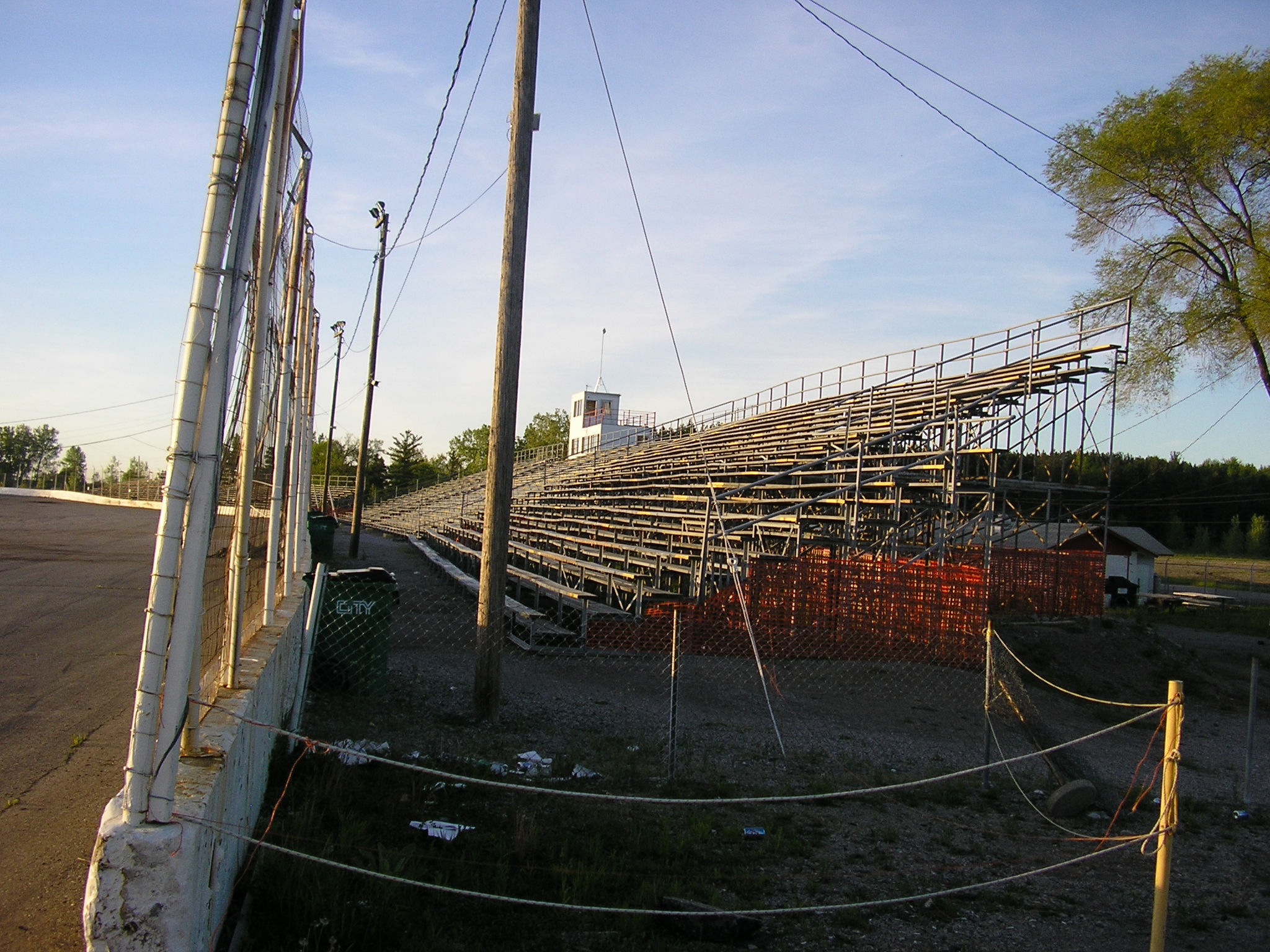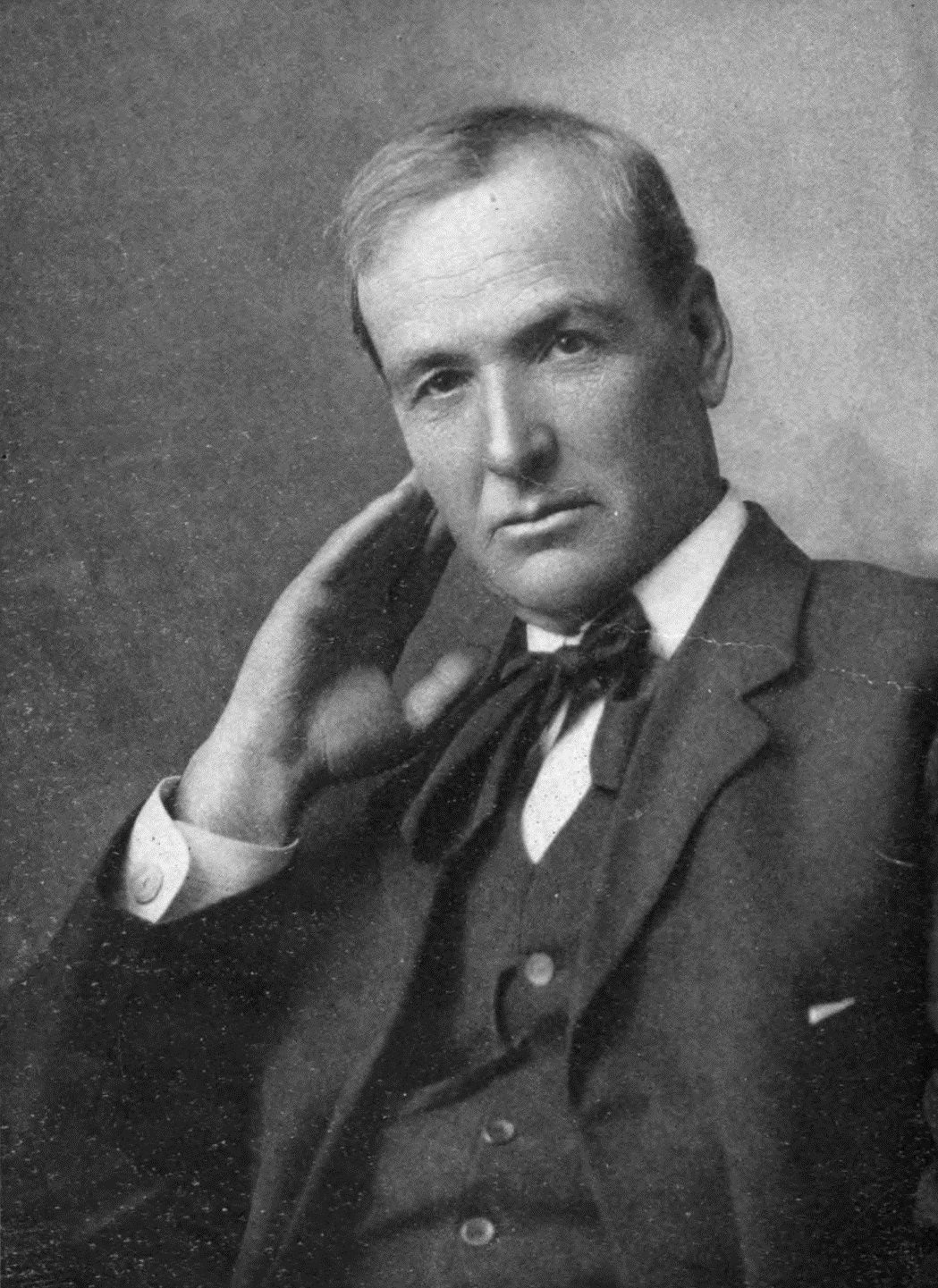|
Heidelberg Raceway
Heidelberg Raceway was an American auto racing track which was built near Heidelberg, Pennsylvania in Scott Township, Allegheny County, approximately southwest of Pittsburgh, Pennsylvania. It held weekly races and numerous special events between 1948 and 1973. It held four NASCAR Strictly Stock/Grand National Series and one NASCAR Convertible Division race between the 1940s and 1960s. In 1960, Heidelberg became the first track to fall off NASCAR's tour. The land is now occupied by a shopping center called Raceway Plaza. History The track was the brainchild of the original Wrights Sea Food Inn owner, Ike Wright. It was originally constructed between 1947 and 1948 to be used as a horse racing establishment, with help and financial backing by Pittsburgh Steelers founder Art Rooney. When horse racing was not legalized in Pennsylvania., the track was converted into a place for autos to compete. The original track was a 1/2-mile dirt track that eventually had a 1/4-mile track cut into ... [...More Info...] [...Related Items...] OR: [Wikipedia] [Google] [Baidu] |
Heidelberg, Pennsylvania
Heidelberg is a borough located southwest of Pittsburgh in Allegheny County, Pennsylvania, United States. The population was 1,288 at the 2020 census. The borough was named after Heidelberg in Germany, the native home of a large share of the early settlers. Geography Heidelberg is located at (40.390919, −80.090693). According to the United States Census Bureau, the borough has a total area of , all land. Sports Heidelberg Raceway was a racetrack that held NASCAR Races Heidelberg has a rich amateur soccer history. Amateur soccer teams from Heidelberg Borough were nationally competitive from the 1920s through the 1950s, winning the amateur national title in 1927, 1929 and 1955. Surrounding communities Heidelberg is bordered primarily by Scott Township; its only other border is with Collier Township to the west. Demographics As of the census of 2000, there were 1,225 people, 571 households, and 331 families residing in the borough. The population density was . There wer ... [...More Info...] [...Related Items...] OR: [Wikipedia] [Google] [Baidu] |
Chris Economaki
Christopher Constantine Economaki (October 15, 1920 – September 28, 2012) was an American motorsports commentator, pit road reporter, and journalist. Economaki was given the title "The Dean of American Motorsports Journalism." at the He was an inductee of several halls of fame, including the , |
Norm Benning
Norm Benning Jr. (born January 16, 1952) is an American professional stock car racing driver and team owner. He last competed part-time in the NASCAR Camping World Truck Series, driving the No. 6 Chevrolet Silverado for his team, Norm Benning Racing. He has worked as a driver analyst for TheRacingExperts.com in the past. Benning has often been referred to as Stormin' Norman after his performance in the 2013 Mudsummer Classic, the Truck Series' first race on dirt. He previously competed in the NASCAR Busch Series and Winston Cup Series. Early career Born in Level Green, Pennsylvania, Benning began by racing as a 15-year-old at Heidelberg Raceway even though he was supposed to be at least 18 years old. He also has raced in dirt late models and asphalt modifieds. ARCA Benning has finished in the top 10 in ARCA points seven times, with a highest of 5th in 2001. In 276 starts, Benning has five top 5 and 32 top 10 finishes. His best effort was a 3rd-place finish at the Springfield di ... [...More Info...] [...Related Items...] OR: [Wikipedia] [Google] [Baidu] |
Joe Mihalic
Joe or JOE may refer to: Arts Film and television * ''Joe'' (1970 film), starring Peter Boyle * ''Joe'' (2013 film), starring Nicolas Cage * ''Joe'' (TV series), a British TV series airing from 1966 to 1971 * ''Joe'', a 2002 Canadian animated short about Joe Fortes Music and radio * "Joe" (Inspiral Carpets song) * "Joe" (Red Hot Chili Peppers song) * "Joe", a song by The Cranberries on their album ''To the Faithful Departed'' *"Joe", a song by PJ Harvey on her album '' Dry'' *"Joe", a song by AJR on their album ''OK Orchestra'' * Joe FM (other), any of several radio stations Computing * Joe's Own Editor, a text editor for Unix systems * Joe, an object-oriented Java computing framework based on Sun's Distributed Objects Everywhere project Media * Joe (website), a news website for the UK and Ireland * ''Joe'' (magazine), a defunct periodical developed originally for Kenyan youth Places * Joe, North Carolina, United States, a town * Jõe, Saaremaa Parish, Estoni ... [...More Info...] [...Related Items...] OR: [Wikipedia] [Google] [Baidu] |
United States Automobile Club
The United States Auto Club (USAC) is one of the sanctioning bodies of auto racing in the United States. From 1956 to 1979, USAC sanctioned the United States National Championship, and from 1956 to 1997 the organization sanctioned the Indianapolis 500. Today, USAC serves as the sanctioning body for a number of racing series, including the Silver Crown Series, National Sprint Cars, National Midgets, Speed2 Midget Series, .25 Midget Series, Stadium Super Trucks, and Pirelli World Challenge. Seven-time USAC champion Levi Jones is USAC's Competition Director. History When the American Automobile Association (AAA) withdrew from auto racing after the 1955 season, citing the Le Mans disaster and the death of Bill Vukovich at Indianapolis as contributing factors, both the SCCA and NASCAR were mentioned as its potential successor. Ultimately, USAC was formed by Indianapolis Motor Speedway owner Tony Hulman. It became the arbiter of rules, car design, and other matters for what it te ... [...More Info...] [...Related Items...] OR: [Wikipedia] [Google] [Baidu] |
Dick Linder
Richard Refeld Linder (April 6, 1923April 19, 1959) was an American, professional, race car driver from Pittsburgh, Pennsylvania. Career Linder raced USAC open wheel as well as NASCAR stock cars. Between 1949 and 1956 he entered 28 NASCAR events, winning three with eight additional Top 10 finishes. Linder's three wins came behind the wheel of his Oldsmobile; Dayton, OH 8/20/1950, Hamburg, NY 8/27/1950, and Vernon, NY 10/1/1950. His final NASCAR race was the 1956 Beach Course event at Daytona. He raced there several times including an 18th-place finish in 1951. Linder recorded over 110 victories at various Pennsylvania race tracks. He and his brother Gus Linder are members of The Pittsburgh Circle Track Club Hall of Fame. Death During a USAC Champ Car event at Trenton Speedway in April 1959, Linder tried to avoid hitting Don Branson, who was spinning in front of him. His racer crashed through the guard rail and rolled over once, landing on its wheels. Linder, who was 36 years ol ... [...More Info...] [...Related Items...] OR: [Wikipedia] [Google] [Baidu] |
Jennerstown Speedway
Jennerstown Speedway Complex is a racetrack in Jennerstown, Pennsylvania. Built on land that was once home to the Jenners Fair the track had its start in the 1920s as a flat, half-mile dirt track. After several changes, advancements and owners the track closed in 2009 until early 2014 when it was reopened. It is a NASCAR certified track, racing greats such as Dale Earnhardt, Sterling Marlin, Ken Schrader, and Darrell Waltrip. Jennerstown Speedway, one of the oldest short-track facilities in the United States, has undergone a number of transformations leading up to today’s state-of-the-art motorsports complex. Track history Constructed in the late 1920s as a flat half-mile dirt oval, the Jenners Fairgrounds, as the speedway was then known, played host to ‘big car’ racing (forerunners to the sprint cars of today) during the 1930s. Among the leading local drivers of that era were Butch Gardner and the ‘Pennsylvania coal miner’, Mike (Little) Serokman. Following World W ... [...More Info...] [...Related Items...] OR: [Wikipedia] [Google] [Baidu] |
Bleachers
Bleachers (North American English), or stands, are raised, tiered rows of benches found at sports fields and other spectator events. Stairways provide access to the horizontal rows of seats, often with every other step gaining access to a row of benches. Benches range from simple planks to elaborate ones with backrests. Many bleachers are open to the ground below so that there are only the planks to sit and walk on. Some bleachers have vertical panels beneath the benches, either partially or completely blocking the way to the ground. Name origins The open seating area in baseball was called the "bleaching boards" as early as 1877. The term "bleachers" used in the sense of benches for spectators can be traced back to at least 1889; named as such because the generally uncovered wooden boards were "bleached by the sun". ''The Dickson Baseball Dictionary'' lists as a ''secondary'' definition the fans sitting in them. By the early 1900s, the term "bleachers" was being used for ... [...More Info...] [...Related Items...] OR: [Wikipedia] [Google] [Baidu] |
Imperial, Pennsylvania
Imperial is a census-designated place (CDP) in Allegheny County, Pennsylvania, United States and part of the Pittsburgh metropolitan area. The community was formerly part of the Imperial-Enlow CDP before splitting into two separate CDP's. The population was 2,541 at the 2010 census. The CDP is located in North Fayette and Findlay Townships, and geographically close to Pittsburgh International Airport. History Imperial was established as a mining town in about 1879 by the Imperial Coal Company. It sits along Montour Run on land that had been the farm of Robert Wilson. Known at first as Montour City, the town soon took the name of the coal company, with a post office under the name Imperial opening in 1880. The town and nearby mines were served by the Montour Railroad. Geography Imperial is located at (40.4536 N, 80.2498 W). According to the U.S. Census Bureau, the CDP has a total area of , all of it land. In terms of road access to Imperial, U.S. Route 30 passes through th ... [...More Info...] [...Related Items...] OR: [Wikipedia] [Google] [Baidu] |
Herb Scott (racing Driver)
Herbert Carnell Scott (born January 18, 1953) is a former American football guard and offensive tackle in the National Football League. He attended Floyd E. Kellam High School in Virginia Beach, and went on to star at the Virginia Union University where he was All-Central Intercollegiate Athletic Association three times. Early years After playing football at Kellam High School, Scott chose to attend Virginia Union University, an HBCU located in Richmond, Virginia. Scott was a four-year starter, 1971–74, and was twice named (1973 and 1974) All- CIAA and NCAA Division II All-American, becoming the first player from Virginia Union University to receive this honor. He was also part of Virginia Union University first - CIAA football title in 50 years when the 1973 Panthers finished 9-1, which included six shutouts. In 1982, he was inducted into the Central Intercollegiate Athletic Association (CIAA) Hall of Fame. In 1988, he was inducted into the Virginia Union Sports Hall of ... [...More Info...] [...Related Items...] OR: [Wikipedia] [Google] [Baidu] |
Ed Howe (racecar Driver)
Edgar Watson Howe (May 3, 1853 – October 3, 1937), was an American novelist and newspaper and magazine editor in the late 19th and early 20th centuries. He was perhaps best known for his magazine, ''E.W. Howe's Monthly'', which he wrote from 1911 to 1933. Howe was well traveled and known for his sharp wit in his editorials. Personal life Howe was born May 3, 1853, in Wabash County, Indiana, in a community now known as Treaty. His father was Henry Howe, a farmer and Methodist circuit rider, and his mother Elizabeth (Irwin) Howe. Howe spent most of his childhood in Harrison County, Missouri, where his family moved when he was 3, first to Fairview, and then to Bethany around 1864. Howe's father was a vocal abolitionist, opposing slavery on religious grounds. When the Civil War broke out, Henry Howe joined to fight for the Union. Returning to Missouri before the end of the war, he purchased a newspaper in Bethany and informed his family of his intention of using it to advocate ... [...More Info...] [...Related Items...] OR: [Wikipedia] [Google] [Baidu] |
Urban Sprawl
Urban sprawl (also known as suburban sprawl or urban encroachment) is defined as "the spreading of urban developments (such as houses and shopping centers) on undeveloped land near a city." Urban sprawl has been described as the unrestricted growth in many urban areas of housing, commercial development, and roads over large expanses of land, with little concern for urban planning. In addition to describing a special form of urbanization, the term also relates to the social and environmental consequences associated with this development. Medieval suburbs suffered from loss of protection of city walls, before the advent of industrial warfare. Modern disadvantages and costs include increased travel time, transport costs, pollution, and destruction of the countryside. The cost of building urban infrastructure for new developments is hardly ever recouped through property taxes, amounting to a subsidy for the developers and new residents at the expense of existing property taxpayers. In ... [...More Info...] [...Related Items...] OR: [Wikipedia] [Google] [Baidu] |





